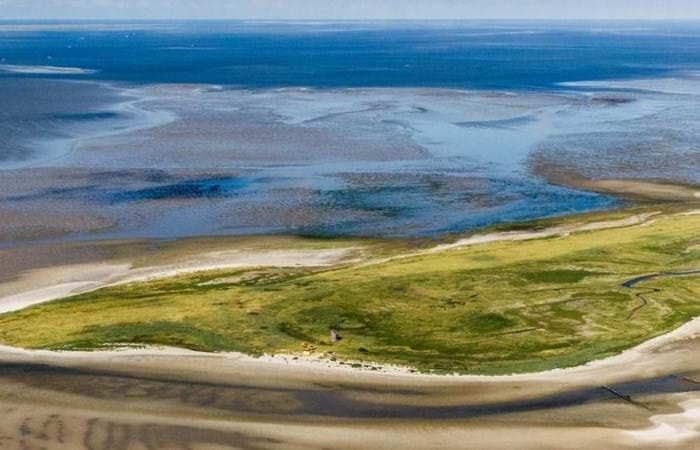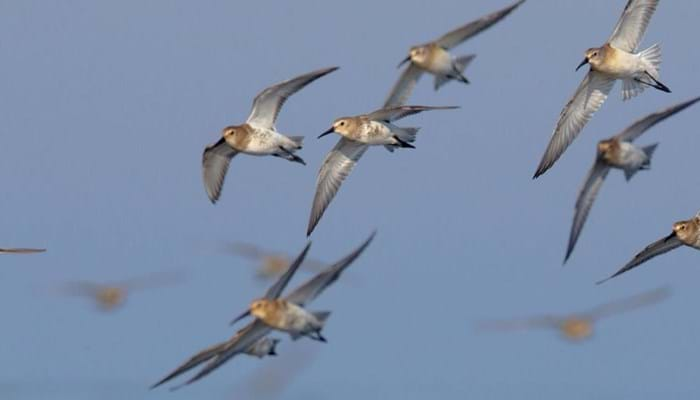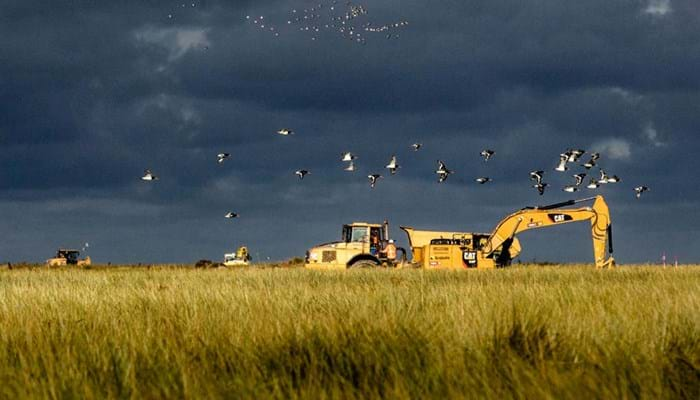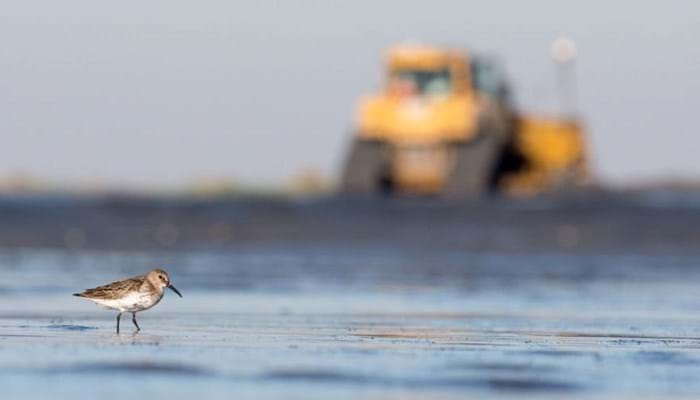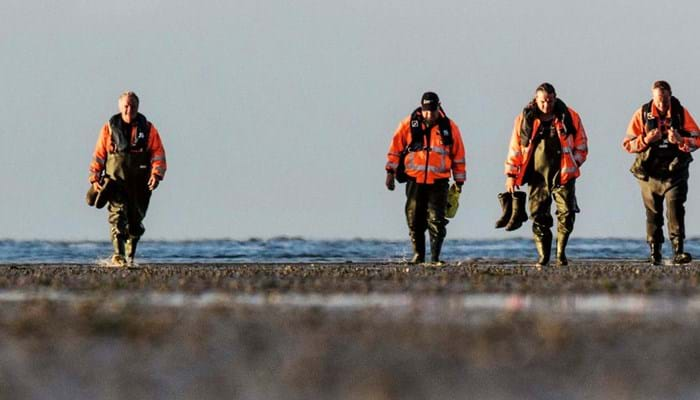Boskalis teamed up with the Dutch Society for the Preservation of Nature (Natuurmonumenten) to protect the uninhabited island of Griend in the Dutch Wadden Sea. The island provides a vital habitat for hundreds of thousands of migratory and breeding birds. However, due to erosion this bird paradise was at risk of being washed away.
Challenge
Natuurmonumenten awarded Boskalis this project mainly because of all the measures it proposed to minimize any disruption of nature. The work continued day and night, with Boskalis using green light on the island at night to protect nature. In order not to disturb the migratory birds, the project started after the nesting season and was suspended during the spring tides.
Solution
Boskalis used sand extracted during the maintenance of shipping channels to create a 400-meter wide foreshore that will protect Griend from erosion in the decades to come. The island’s natural protection consists of a barrier of shells, plant debris and sand with a salt marsh on the lee side. The new shore includes shellfish banks, consistent with the natural situation on Griend. To make Griend more appealing for nesting birds, the topsoil was removed in some parts of the island. Terns and common terns have a preference for barren and sparsely vegetated locations and the higher parts of Griend were very much overrun with vegetation. Boskalis used the topsoil that was removed for the new shore. In addition, a small opening was created in the dike on the northern side, allowing the seawater to flow into the salt marsh at high tide and deposit clay, thus naturally raising the level of the salt marsh.
